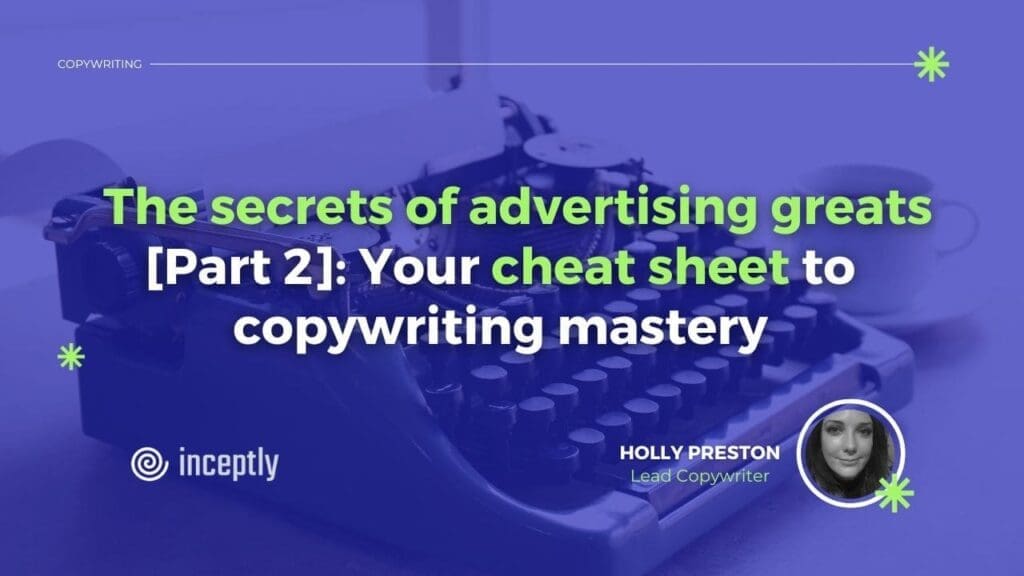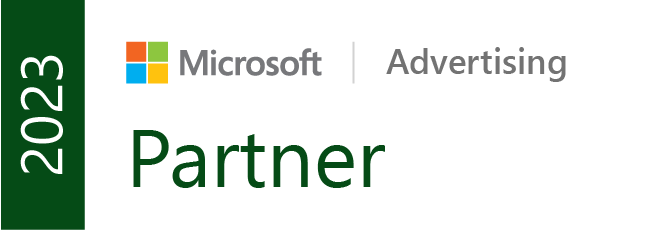
Hola fellow copy nerds!
If you caught last week’s article, you’re already in the loop about our deep dive into classic, must-read advertising books to amp up our copywriting skills.
So far, we’ve broken down:
💡 Breakthrough Advertising by Eugene Schwartz
✉️ The Boron Letters by Gary C. Halbert
📚 The Adweek Copywriting Handbook by Joseph Sugarman
Missed it? No worries, you can catch up HERE.
Want to brainstorm with our team on new ways to scale your business with YouTube Ads (and other performance video platforms)?
Join us for a free YouTube ad brainstorming session👇
Today, we’re diving into some of the most iconic and influential advertising books of all time.
Whether you’re revisiting these classics or discovering them for the first time, keep reading to uncover the lessons you need to create great copy that converts. In this article, we’ll break down the core teachings from essential books every copywriter should have on their shelf:
📈 How to Write a Good Advertisement by Victor Schwab
🤑 Words That Sell by Rick Bayan
Let’s start, shall we?
Book 1: How to Write a Good Advertisement 📈 by Victor Schwab
“How to Write a Good Advertisement” by Victor Schwab is a classic guide that distills the principles of effective advertising into clear, actionable advice. Schwab, a direct-response advertising pioneer, covers everything from writing compelling headlines to crafting persuasive body copy and creating strong calls to action.
Key takeaways:
1) Crafting compelling headlines:
Purpose: The headline’s primary purpose is to grab attention and compel the reader to continue reading.
Types of headlines: Schwab identifies several types of effective headlines, including those that promise a benefit, arouse curiosity, and provide news or information.
Examples: “How I improved my memory in one evening,” “Are you making these mistakes in English?”
2) Utilizing the ‘Five key elements’:
Element 1 – Get attention: Use a strong headline to capture interest.
Element 2 – Show people an advantage: Clearly present the benefit or advantage of the product.
Element 3 – Prove it: Provide evidence or testimonials to support your claims.
Element 4 – Persuade people to grasp this advantage: Use persuasive language to convince the reader of the benefit’s value.
Element 5 – Ask for action: End with a clear call to action, prompting the reader to take the next step.
3) Writing persuasive body copy:
Focus on benefits: Highlight the benefits of the product, not just the features. Explain how the product will solve the reader’s problems or improve their life.
Use specifics: Specific details and concrete facts are more persuasive than general statements. For example, “Lose 10 pounds in 30 days” is more compelling than “Lose weight fast.”
Address objections: Anticipate and address potential objections the reader might have. This builds trust and removes barriers to action.
4) Creating strong Call to action (CTAs):
Clarity and urgency: Make your call to action clear and urgent. Use strong, action-oriented language and create a sense of urgency.
Examples: “Order now and receive free shipping!” or “Call today for a free consultation!”
5) Using proof and testimonials:
Build credibility: Use testimonials, case studies, and statistics to build credibility and support your claims. Real-life examples and third-party endorsements are highly persuasive.
Examples: Include customer testimonials like, “I doubled my sales in just three months using this method!” or “Over 1,000 satisfied customers!”
6) Leveraging visuals and layout:
Visual appeal: Use visuals to enhance your message and make the ad more engaging. This includes images, charts, and effective use of whitespace.
Readable layout: Ensure the ad is easy to read with a clean layout, short paragraphs, and bullet points. Use subheadings to break up text and guide the reader through the ad.
7) The power of curiosity:
Engaging the reader: Curiosity is a powerful tool in advertising. Crafting headlines and leads that arouse curiosity can significantly increase reader engagement.
Examples: A headline like “The one trick doctors don’t want you to know” piques curiosity and encourages readers to continue.
8) Use of the ‘Reason Why’ approach:
Justifying claims: Providing reasons why your product works or why your offer is valuable adds credibility and persuades skeptical readers.
Examples: “Here’s why our energy drink is better than the rest: Our unique formula includes natural ingredients that boost energy without the crash.”
9) Creating a sense of urgency:
Immediate action: Encouraging readers to act immediately can drive higher conversion rates. Use time-limited offers or limited availability to create urgency.
Examples: “Limited time offer – Order within the next 24 hours to receive a 20% discount!”
10) Testing and refining:
Continuous improvement: Schwab emphasizes the importance of testing different elements of your ads, such as headlines, copy, and calls to action, to see what works best.
Practical tip: Use A/B testing to compare different versions of your ad and refine it based on performance data.
Direct quotes:
“The headline is the ‘ticket on the meat.’ Use it to flag down readers, then compel them to read further.”
“People are more interested in themselves than in anything else. They want to know what the product will do for them.”
Personal insights:
Victor Schwab’s practical approach to advertising emphasizes the importance of understanding the reader and focusing on benefits. His breakdown of the “Five key elements” provides a clear framework for creating effective ads. Schwab’s emphasis on specificity, proof, and strong calls to action are particularly valuable for any copywriter looking to improve their craft. By applying these principles, you can create ads that not only capture attention but also drive action and convert readers into customers.
Book 2: Words That Sell 🤑 by Rick Bayan
“Words That Sell” by Rick Bayan is an indispensable reference for copywriters, marketers, and anyone involved in persuasive writing. The book is essentially a thesaurus of high-impact words and phrases organized by category, designed to help writers find the perfect words to enhance their copy and make their messages more compelling.
Key takeaways:
1) Power words and phrases:
Emotional impact: Words have the power to evoke strong emotions. Using the right words can significantly enhance the persuasive power of your copy.
Categories: The book categorizes words and phrases into various themes like excitement, reliability, luxury, and urgency, making it easy to find the right words for your message.
Examples:
Instead of “good,” use “exceptional,” “outstanding,” or “unparalleled.”
For excitement: “thrilling,” “electrifying,” “exhilarating.”
For reliability: “trusted,” “proven,” “dependable.”
Direct quote:
“The right words can transform a bland message into an irresistible one.”
2) Using descriptive language:
Vivid imagery: Descriptive words help create vivid imagery in the reader’s mind, making your message more memorable and engaging.
Techniques: Use adjectives and adverbs that paint a clear picture. Instead of saying “a nice car,” say “a sleek, high-performance vehicle.”
Examples:
For luxury: “lavish,” “opulent,” “sumptuous.”
For taste: “scrumptious,” “delectable,” “mouth-watering.”
For appearance: “radiant,” “glistening,” “stunning.”
Direct quote:
“Words are the most powerful drug used by mankind.”
3) Conveying benefits and features:
Highlighting advantages: Use words that clearly communicate the benefits and features of your product or service.
Techniques: Focus on the positive outcomes and the value your product brings. Instead of “cost-effective,” try “saves you money” or “affordable luxury.”
Examples:
For benefits: “life-changing,” “revolutionary,” “cutting-edge.”
For features: “state-of-the-art,” “innovative,” and “high-performance.”
For guarantees: “backed by a lifetime warranty,” “proven to deliver results.”
Direct quote:
“People are more interested in themselves than in anything else. They want to know what the product will do for them.”
4) Creating urgency and importance:
Prompting action: Words that create a sense of urgency can drive immediate action. Use time-sensitive phrases to encourage quick decisions.
Tecniques: Incorporate words that convey scarcity or limited-time offers. Instead of “available now,” use “only a few left,” or “limited time offer.”
Examples:
Urgency: “Act now,” “Don’t miss out,” “last chance.”
Exclusivity: “limited edition,” “exclusive offer,” “one-time opportunity.”
Immediate benefits: “instant access,” “immediate results,” “quick and easy.”
Direct quote:
“Act now! Supplies are limited.”
5) Building trust and credibility:
Establishing reliability: Trustworthy words and phrases help build credibility with your audience.
Techniques: Use words that convey honesty, reliability, and expertise. Instead of “we think,” use “we guarantee” or “proven.”
Examples:
Trust: “certified,” “endorsed,” “trusted by.”
Expertise: “expertly crafted,” “masterfully designed,” “professionally verified.”
Reliability: “guaranteed,” “dependable,” “unfailingly.”
Direct quote:
“Trust and credibility are built with words like ‘certified,’ ‘endorsed,’ and ‘guaranteed.'”
6) Enhancing readability and flow:
Smooth transition: Words that connect ideas and maintain flow improve readability and keep the reader engaged.
Techniques: Use transitional phrases and conjunctions to link ideas seamlessly. Instead of “also,” use “furthermore,” “in addition,” or “moreover.”
Examples:
Transitions: “in contrast,” “as a result,” “similarly.”
Flow: “consequently,” “hence,” “therefore.”
Cohesion: “likewise,” “accordingly,” “correspondingly.”
Direct quote:
“Smooth transitions guide the reader effortlessly from one idea to the next.”
7) Addressing different audiences:
Tailoring language: Adjust your language to fit the audience you’re addressing. Use formal language for professional audiences and a more casual tone for general consumers.
Examples:
Professional audience: “optimize,” “strategize,” “leverage.”
General audience: “improve,” “plan,” “use.”
Youthful audience: “cool,” “fresh,” “awesome.”
Direct quote:
“Tailor your language to fit the audience—different words resonate with different groups.”
8) Utilizing power verbs:
Action-oriented language: Power verbs drive action and engagement. They are more effective than passive or weak verbs.
Examples:
Instead of “allows you to,” use “empowers you to.”
Instead of “can help with,” use “boosts” or “enhances.”
Dynamic verbs: “transform,” “ignite,” and “revolutionize.”
Direct quote:
“Power verbs like ‘transform,’ ‘ignite,’ and ‘revolutionize’ compel readers to take action.”
9) Overcoming writer's block:
Inspirational triggers: The book provides triggers to help overcome writer’s block and stimulate creativity.
Techniques: Keep a list of power words and phrases handy to inspire your writing. When stuck, refer to the book’s categories to find the right words.
Examples:
If writing about innovation, browse sections like “Newness” or “Technology” for inspiration.
For health and wellness topics, look at “Health,” “Fitness,” and “Well-being.”
Direct quote:
“When in doubt, turn to your list of power words to spark creativity and overcome writer’s block.”
Personal insights:
Rick Bayan’s “Words That Sell” is a must-read for anyone involved in crafting persuasive messages. The book’s categorization of high-impact words and phrases makes it an excellent resource for quickly finding the perfect word to enhance your copy. By incorporating these powerful words, you can create more engaging, compelling, and effective advertisements that resonate with your audience and drive action.
So, while these books by Schwab and Bayan were written a long time ago, they’re still super useful for copywriters today. They teach us about writing persuasive headlines, focusing on benefits, creating strong calls to action, and using powerful language—lessons that never go out of style. It’s important to keep up with new trends, but revisiting these classics helps keep our basic skills sharp. These authors set the foundation, but to be successful now, we also need to understand current culture, research what works today, and keep testing and refining our approach. By mixing old techniques with new ideas, we can create the kind of copy that makes an impact.
Happy writing, and may your copy always convert!
Want to brainstorm with our team on new ways to scale your business with YouTube Ads (and other performance video platforms)?
Join us for a free YouTube ad brainstorming session👇
Want more content like this?
Don’t miss out on the latest news and updates from the world of Direct Response advertising! Subscribe to our newsletter today 👇

Holly Preston, Lead Copywriter
Holly is behind most of Inceptly's successful creatives, supporting the team with her experience and imagination, making her an invaluable asset to Inceptly.
Like this post? Let's continue the conversation!
Get in touch with us by shooting us a quick email or tagging us on LinkedIn or Instagram, and sharing your thoughts. Your feedback helps us keep our blog relevant and interesting.
Get Our Newsletter
Need Help?
Get in touch with us for an insightful evaluation of your ads + actionable tips to help amp up your direct response revenue





